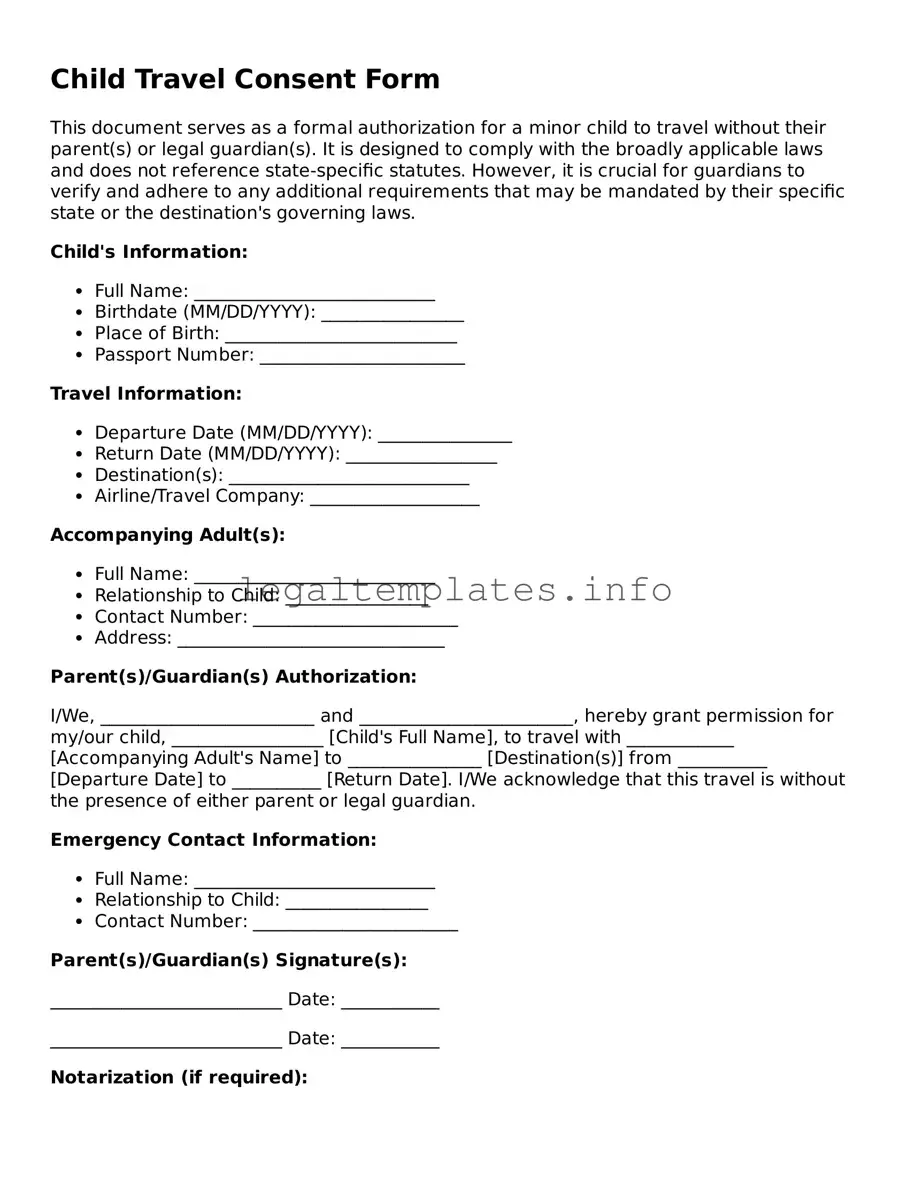When preparing for a child's trip, especially when they're traveling alone or with one parent, filling out a Child Travel Consent Form is a crucial step. However, common mistakes can complicate this straightforward process. One such oversight is not providing complete information about the trip. This includes specific travel dates, destinations, and accommodation details. These specifics ensure the child’s safety and smooth travel, acting as a helpful reference for authorities, if needed.
Another frequent error is neglecting to include all necessary legal guardian or parental information. The form should reflect the full names, addresses, and contact details of all guardians or parents, regardless of whether they are traveling with the child. This is vital for emergency situations or when consent verification is needed.
People often forget to get the form notarized, overlooking the importance of this step. A notary public’s seal confirms the authenticity of the guardians' or parents' signatures, adding an extra layer of verification and security to the document. Without this, the consent form might not be recognized by airlines, border control, or other authorities, potentially halting the travel plans.
Another common issue is using outdated or incorrect forms. As legal requirements can change, it’s essential to use the most current form that complies with the latest regulations. Using an outdated form can lead to unnecessary delays or even prevent the child from traveling.
Mistakes in the details of the accompanying adult are also problematic. If the child is traveling with an adult, their full name, relationship to the child, and contact information must be accurately provided. Any discrepancies in this information can raise suspicions and cause delays.
Incorrectly assuming consent is not needed for domestic travel can be a grave mistake. Although rules vary by country and sometimes even by airline, it’s better to be prepared with a signed consent form for any travel scenario involving a minor. This helps avoid complications with lodging, air travel, or when encountering law enforcement.
Forgetting to mention special circumstances, such as medical issues or allergies, is another oversight that can affect the child's travel experience. Including this information on the form ensures that the child receives the necessary care and attention during their journey.
Some people fail to provide multiple contact methods for guardians or parents. In today's digital age, supplying various communication options, including phone numbers and email addresses, ensures that guardians or parents can be reached quickly if needed.
A signature mismatch between the form and the parent's or guardian's official ID can also disrupt travel plans. Authorities may compare the signatures for verification, so it's important that they match.
Lastly, a common pitfall is not keeping copies of the consent form. Travelers should have multiple copies: one with the child, one with the remaining parent or guardian if not traveling, and even a digital copy saved online. This ensures that the document is readily available whenever and wherever it’s needed.
